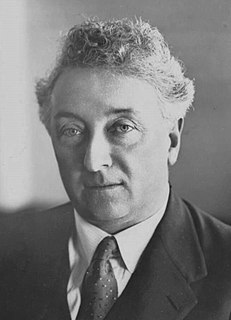| |||||||||||||||||||||||||||||||
All 74 seats of the House of Representatives 38 seats were needed for a majority in the House 19 (of the 36) seats of the Senate | |||||||||||||||||||||||||||||||
|---|---|---|---|---|---|---|---|---|---|---|---|---|---|---|---|---|---|---|---|---|---|---|---|---|---|---|---|---|---|---|---|
| |||||||||||||||||||||||||||||||
| |||||||||||||||||||||||||||||||
Federal elections were held in Australia on 21 September 1940. All 74 seats in the House of Representatives and 19 of the 36 seats in the Senate were up for election. The incumbent Coalition, consisting of the United Australia Party led by Prime Minister Robert Menzies and the Country Party led by Archie Cameron, defeated the opposition Labor Party under John Curtin.

Elections in Australia take place periodically to elect the legislature of the Commonwealth of Australia, as well as for each Australian state and territory. Elections in all jurisdictions follow similar principles, though there are minor variations between them. The elections for the Australian Parliament are held under the federal electoral system, which is uniform throughout the country, and the elections for state and territory Parliaments are held under the electoral system of each state and territory.

The House of Representatives is the lower house of the bicameral Parliament of Australia, the upper house being the Senate. Its composition and powers are established in Chapter I of the Constitution of Australia.

The Senate is the upper house of the bicameral Parliament of Australia, the lower house being the House of Representatives. The composition and powers of the Senate are established in Chapter I of the Constitution of Australia. There are a total of 76 Senators: 12 are elected from each of the six states regardless of population and 2 from each of the two autonomous internal territories. Senators are popularly elected under the single transferable vote system of proportional representation.
Contents
The Coalition had won 36 seats, two short of a majority, but formed a government on 28 October 1940 with the support of both independent crossbenchers, Alexander Wilson and Arthur Coles. The four MPs elected to Lang Labor's successor, the Australian Labor Party (Non-Communist), officially re-joined the ALP just months after the election in February 1941, bringing the ALP seat tally up to 36. The UAP–Country minority government lasted only until October 1941, when the two independents crossed the floor and allowed the ALP to form a minority government with Curtin as prime minister. It remains the only time since the 1910 introduction of an elected two-party system where the government changed as the result of a parliamentary confidence vote.
Alexander Wilson was an Australian wheat farmer and federal politician who played a key role in the downfall of the Fadden Government in 1941.

Sir Arthur William "A.W." Coles was a prominent Australian businessman and philanthropist, a son of St James, Victoria shopkeeper George W. Coles.

Lang Labor was a faction of the Australian Labor Party (ALP) consisting of the supporters of Jack Lang, who served two terms as Premier of New South Wales and was the party's state leader from 1923 to 1939. On several occasions, its members broke away from the ALP and formed separate political parties, with representation in both state and federal parliaments.
Future opposition leaders H.V. Evatt and Arthur Calwell both entered parliament at this election.

Arthur Augustus Calwell KCSG was an Australian politician who served as the leader of the Labor Party from 1960 to 1967. He led the party to three federal elections without success.

















